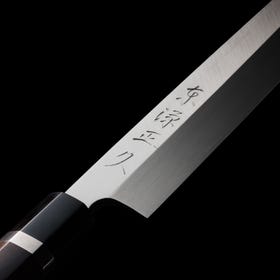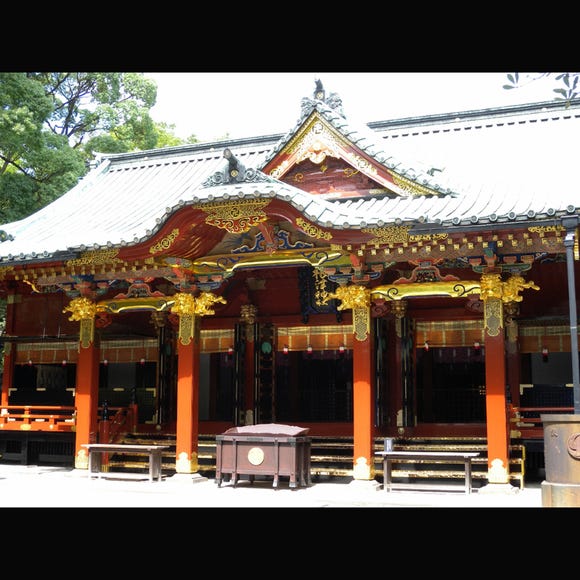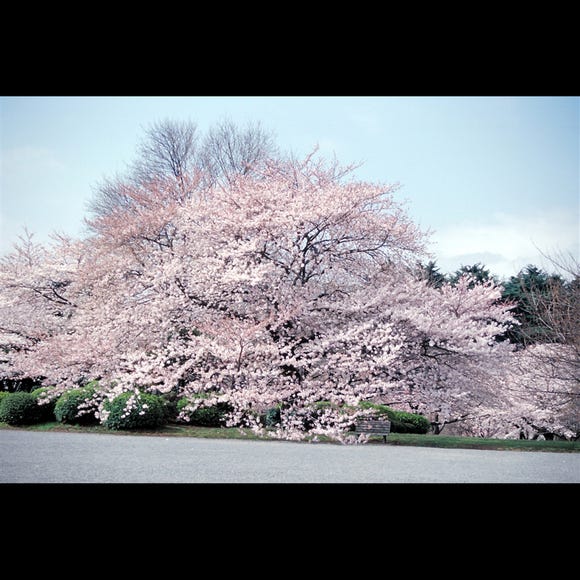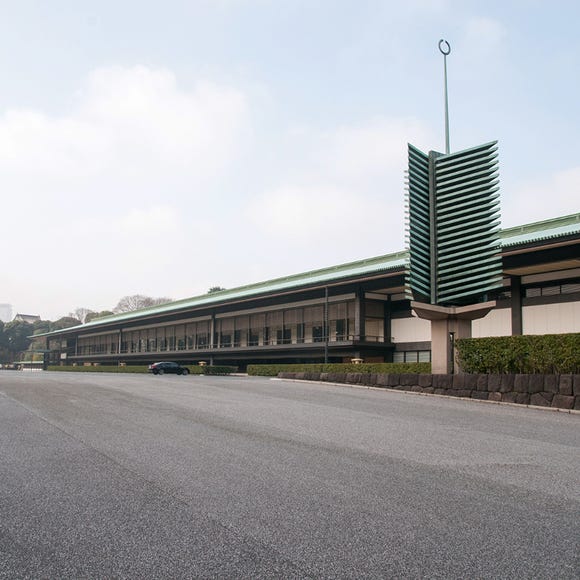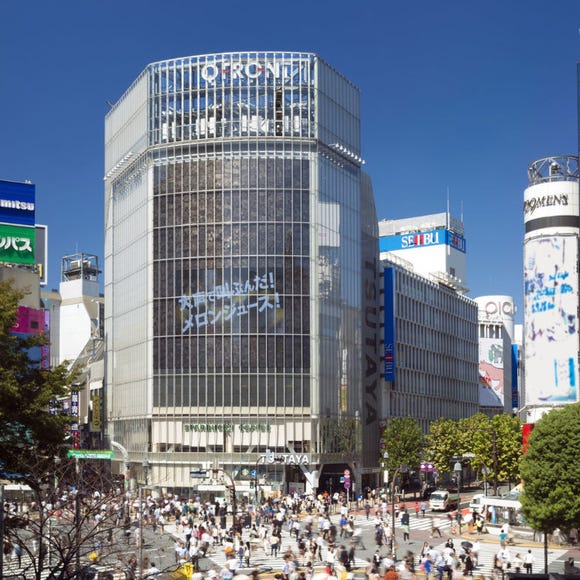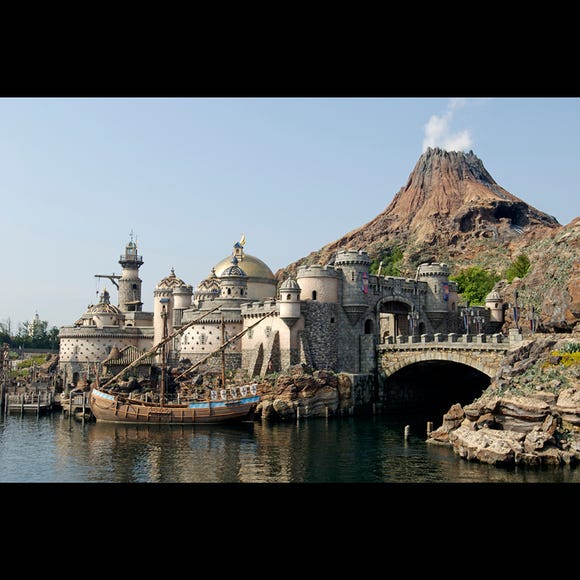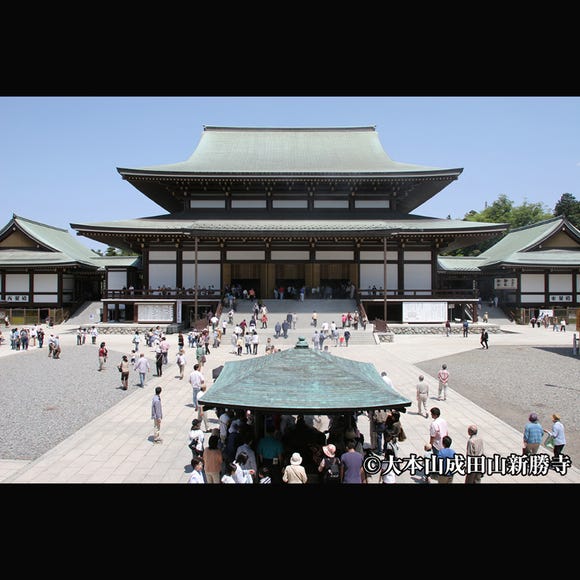
These are the top recommendations for Tsukiji, with travel tips and more, according to LIVE JAPAN, a top-class travel website for visitors to Japan. Our ranking is based on the most popular pages viewed by foreign visitors in a given category.
For instance, Tsukiji Outer Market, Tsukiji Hongwanji, Hamarikyu Gardens and other related spots will be listed. Be sure to check them out during your visit to Tsukiji!
1.Tsukiji Outer Market
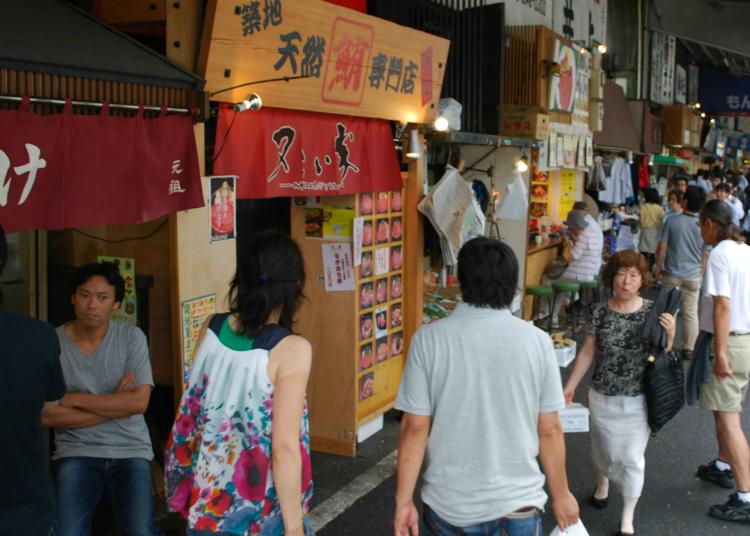
The Tsukiji Outer Market is located on the outer rim of the famous wholesale market in Tokyo. About 400 shops specialize in food-related products, such as freshly caught seafood, good-quality fresh produce, cooking tools, and tableware. There are also many restaurants that serve fresh seafood in the form of sushi and kaisen-don (seafood over rice). It is a very popular spot, not only for tourists but also general consumers. Seminars and events about food are held from time to time.
The general information center, Johoichiba Puratto Tsukiji, also opened in 2012. The center offers information about shops, sightseeing, and transportation, and it sells center-original goods. The center also has space for resting, and you can stop by at your convenience while you are sightseeing. Although the Tsukiji Outer Market will remain, the inner wholesale market will be moved to Toyosu in 2017. After the move, new commercial facilities will be built in the place where the wholesale market currently sits. It is a one-minute walk from the A1 Exit of the Tsukijishijo Station of Toei Oedo Line or the No. 1 or 2 Exit of the Tsukiji Station on the Subway Hibiya Line.
Rules and Restrictions:
■At Restaurants
Restaurants in Tsukiji Market tend to be small with limited seating. Sometimes lines form outside. Depending on the time of day, you may have to keep up with the eating pace of the locals. (Yes, they eat fast because they have to go back to work.) Also, splitting meals is generally a taboo during the busy hours.
■Smoking
In the Chuo-ku, smoking on the streets is prohibited. Just smoke within the designated areas with ashtrays.
■Large luggage and strollers
The streets are narrow and intricate with lots of people. Please come to the Market without big items like suitcases and large belongings and strollers.
■What to wear
At Tsukiji Market, the floors are often wet and slippery, and bikes and carts are going here and there, so make sure to come with your safe shoes that covers your toes. No high-heeled shoes and sandals.
■About ”Tsukiji Uogashi”
Shopping at the new wholesale facility called ”Tsukiji Uogashi” is limited to those who have permission in advance of 9:00 a.m.
*After 9:00 a.m. the wholesale facility will be open to everyone.
-
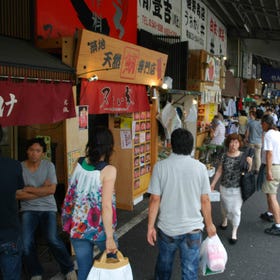
-
Address
Amount of 1,000 ridge 1F, 4-16-2, Tsukiji, Chuo-ku, Tokyo, 104-0045
View Map -
Nearest Station
Tsukijishijo Station (Toei Oedo Line)
1 minute on foot
- Phone Number 03-3541-9444
-
Address
Amount of 1,000 ridge 1F, 4-16-2, Tsukiji, Chuo-ku, Tokyo, 104-0045
2. Tsukiji Hongwanji
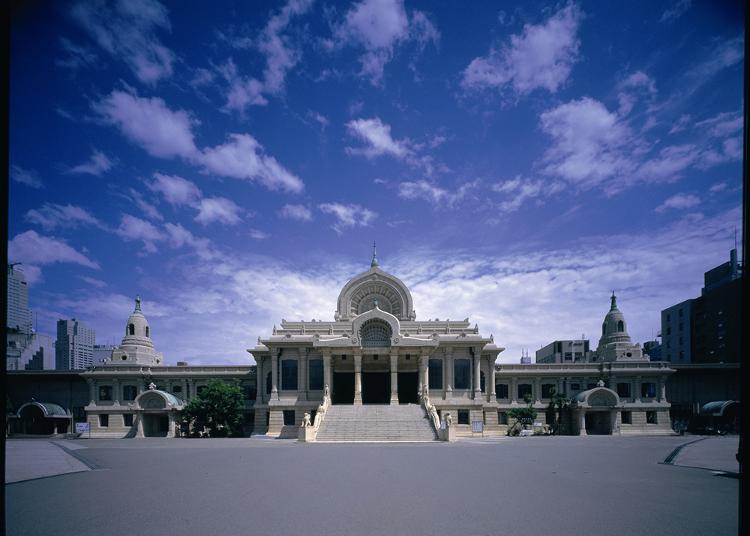
This one is a branch temple of the Jodo Shinshu Honganji denomination, whose honzan (mother temple) is Nishi Honganji in Kyoto. The temple was originally established near Asakusa in 1617; however, it was burned down by a tragic fire.
After the fire, because the allocated plot for reconstruction was off the shoreline, devout followers and others who aimed for the reconstruction of the main hall filled the sea to reclaim the land and complete the reconstruction. The name Tsukiji comes from ”reclaimed land.” Although the temple was destroyed again by the 1923 Great Kanto earthquake, it was reconstructed in 1934 to its current state.
The exterior of the main worship hall is an original stone construction in the ancient Indian style, but the interior of the hall is arranged in the traditional Shinshu-sect temple design and layout. Together with the pipe organ and stained glass windows, a mysterious atmosphere is created in the temple. The main image of the temple is Amida Nyorai (Amitabha Tathagata), which is believed to save all living things equally, and Shinran Shonin propagating its teachings was the origin of the faith of Jodoshinshu sect.
On the right and left of the main worship hall are the missionary halls facilitated with a Japanese restaurant and a tea lounge where you can relax and guest rooms open to the public on their 3rd floor. The temple was designated as an Important Cultural Property in 2014. It is a one-minute walk from the Tokyo Metro Hibiya Line Tsukiji Station.
-
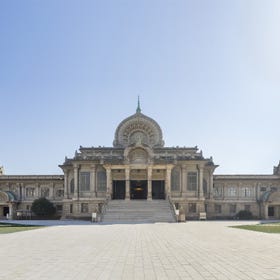
-
Address
3-15-1 Tsukiji, Chuo-ku, Tokyo, 104-8435
View Map -
Nearest Station
Tsukiji Station (Tokyo Metro Hibiya Line)
- Phone Number 0120-792-048
-
Address
3-15-1 Tsukiji, Chuo-ku, Tokyo, 104-8435
3. Hamarikyu Gardens
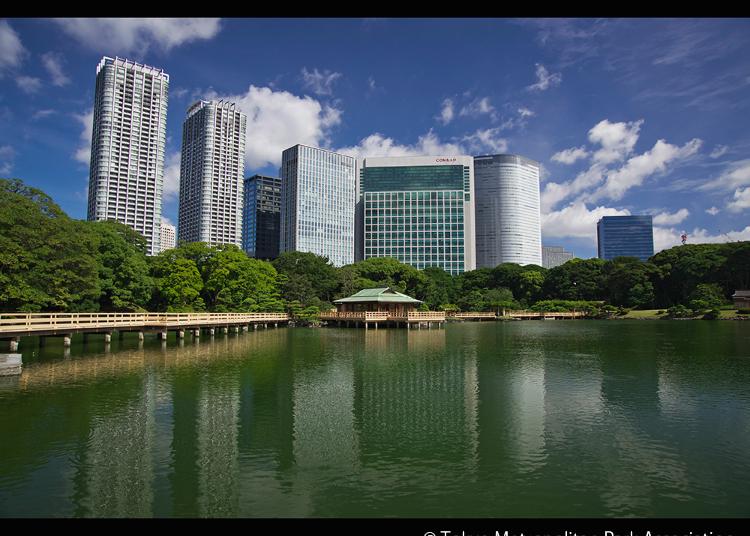
A representative daimyo teien (feudal lord’s garden) of the Edo Era, with a tidal pond and two duck hunting sites. Historically, it was a falconry for the shogun's family. The tidal pond is a seawater pond that depends on the intake of water from Tokyo Bay, and the atmosphere of the pond changes as the intake volume is adjusted by opening or closing the water gate according to changes in the water level of Tokyo Bay. In the fall and the winter, wild ducks still fly to the duck hunting site, which was used as a hunting site during the Edo Era. There is also a 300-year-old pine tree, which is said to have been planted to praise the great achievements of the sixth Tokugawa shogun, Ienobu, who ordered large-scale reconstruction of this garden. There are 800 plants of 60 species planted in the garden and the flowers of the seasons, such as cherry blossoms in spring and peonies in winter, are worth seeing. At the tea room called Chaya, you can enjoy a cup of tea with Japanese-style sweets while appreciating the beautiful landscape of the garden. Currently, it is designated a Special Place of Scenic Beauty and a National Special Historic Site by the nation. It takes 5 minutes to get to Ujoguchi located inside of the garden from Shiodome Station of Metropolitan Subway Oedo Line and 7 minutes to get to Otemon gate from Tsukijishijo and Shiodome stations on the Metropolitan Subway Oedo Line and Shiodome Station on Yurikamome.
-
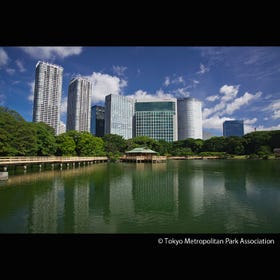
-
Address
Hamarikyuteien, Chuo-ku, Tokyo, 104-0046
View Map -
Nearest Station
Tsukijishijo Station (Toei Oedo Line)
5 minutes on foot
- Phone Number 03-3541-0200
-
Address
Hamarikyuteien, Chuo-ku, Tokyo, 104-0046
4. Azuma Minamoto no MASAHISA
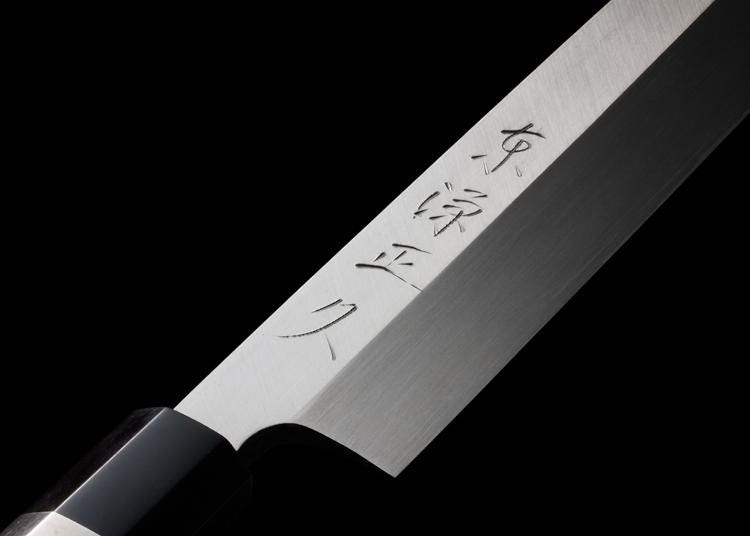
As a place that disseminates Japanese food culture, the Tsukiji fish market attracts many people from both within and outside of Japan every day. Our store is in the Tsukiji Outer Market and originated from swordsmiths who served the Minamoto clan through the ages. In 1872, when the fish market was in Nihonbashi, they made a change from swordsmithery to kitchen knife smithery and set up shop. In 1962, with the relocation of the fish market to Tsukiji, they also made moves into Tsukiji.
Over a long period of 145 years, Azuma Minamoto-no MASAHISA has progressed together with the history of the Tsukiji fish market. Since their foundation, they have continuously made efforts in their own research and development while at the same time following the traditional methods of swordsmiths. Through such efforts made by successive family heads along with loyal customers, their sashimi knife was developed, which is an incomparable knife with a 150-centimeter blade for slicing raw fish.
The unique manufacturing methods and reliable sharpening craftsmanship which are nurtured through strict practice allow them to offer kitchen knives that have won the favor of a variety of long-standing customers, from professional chefs to home cooks. They also offer services that meet a variety of customers’ needs, such as a made-to-order service and a name engraving service. Surely a perfect stop for the kitchen-loving traveler.
5. Toyosu Tsukiji Information Center

An expert guide will introduce you to the highlights of Tsukiji and experience of Japan's food culture in Tsukiji where the food culture of the Edo period remains strong.
One of the most popular tours is their tour of the outer market where more than 400 products are sold, restaurants and stalls line, and many expert craftsmen gather, as well as a sushi-making experience, and a matcha tea-serving demonstration. Of course, the tour is given in English. Morning pickups and other customized orders are also possible.
-
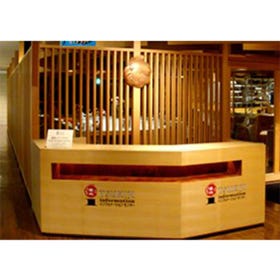 Toyosu Tsukiji Information Center豊洲・築地インフォメーションセンター
Toyosu Tsukiji Information Center豊洲・築地インフォメーションセンター-
Address
Tsukiji KY Building 2F, 4-7-5 Tsukiji, Chuo-ku, Tokyo, 104-0045
-
Nearest Station
Tsukiji Station (Tokyo Metro Hibiya Line)
3 minutes on foot
- Phone Number 03-3541-6521
-
Address
Tsukiji KY Building 2F, 4-7-5 Tsukiji, Chuo-ku, Tokyo, 104-0045
6. Chuo-Ohashi Bridge
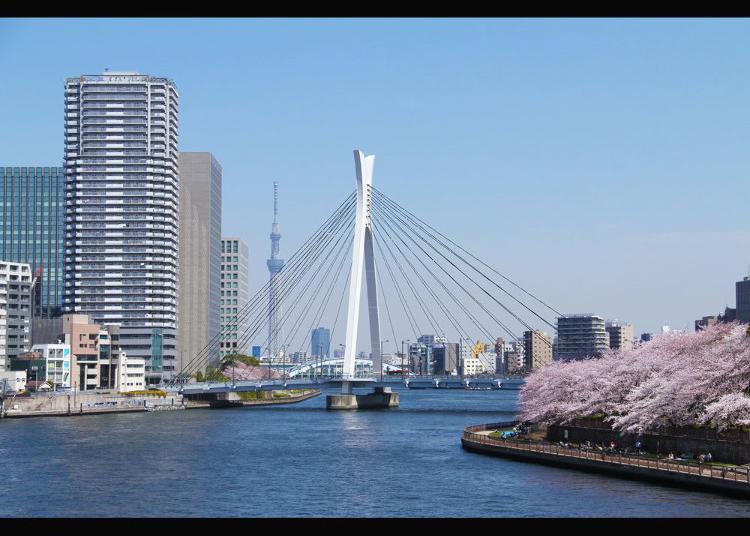
This is the second cable-stayed bridge across Sumida River and was completed in 1993. The Sumida River is a 24-kilometer, Class A river, and it branches from the Arakawa River in the Kita Ward and flows into the Tokyo Bay. Many bridges cross the river. The Chuo-Ohashi Bridge connects the Tsukuda area, a new cosmopolitan town with many high-rise buildings and the metropolitan area of Tokyo.
This bridge made us of curved girders, and the 32 cables are used on its X-shaped tower. The Messenger (a statue created by Ossip Zadkine), which was sent to Tokyo by the mayor of Paris to commemorate the river friendship partnering between the Sumida in Tokyo and the Seine in Paris, stands in the middle of the bridge on the upstream bridge column and watches over people passing by. You can see the Eitai-bashi Bridge upstream and the Tsukuda Ohashi Bridge downstream. It is a ten-minute walk from the Tokyo Metro Tsukishima Station and a seven-minute walk from the Tokyo Metro Hatchobori Station.
-
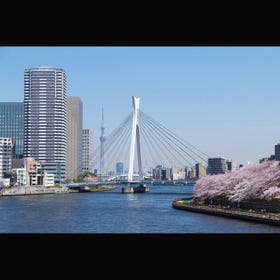
-
Address
2, Shinkawa, Chuo-ku, Tokyo, 104-0033
View Map -
Nearest Station
Tsukishima Station (Tokyo Metro Yurakucho Line / Toei Oedo Line)
10 minutes on foot
-
Address
2, Shinkawa, Chuo-ku, Tokyo, 104-0033
7. Sumiyoshi Shrine
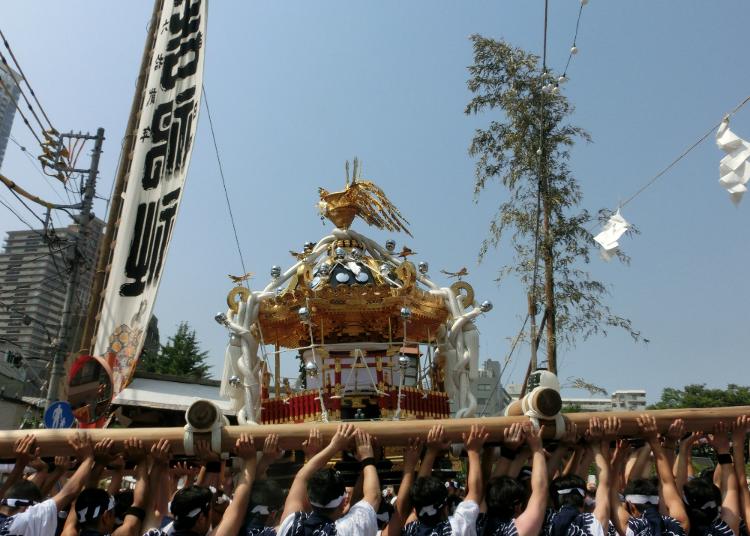
Sumiyoshi Shrine was established in the 3rd year of the Shouhou era (1646). Sumiyoshi sanjin (3 Shinto gods), Empress Consort Jingu and Tokugawa Ieyasu are enshrined in this historic shrine. At that time, Tsukudajima where the shrine was established was the gateway for the Edo-minato Port. Thus many people including fishermen came to the shrine to pray for safe sea travel. People still respect the shrine and visit to pray to the god. Many important cultural properties of the ward are preserved in the shrine grounds. There many precious artifacts exist such as the shrine signboard written by Prince Arisugawa Takahito with ceramic frame and a Shinto water ablution pavilion whose transom has an engraved landscape of Tsukudajima area at that time. At the annual festival (regular festival) held in summer once every three years, Lions heads and the octagonal Mikoshi portable shrine depart from the shrine, and this area is bustling with many people. The nearest station is Tsukishima Station.
-
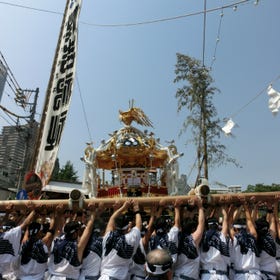
-
Address
1-1-14, Tsukuda, Chuo-ku, Tokyo, 104-0051
View Map -
Nearest Station
Tsukishima Station (Tokyo Metro Yurakucho Line / Toei Oedo Line)
5 minutes on foot
- Phone Number 03-3531-3500
-
Address
1-1-14, Tsukuda, Chuo-ku, Tokyo, 104-0051
*Prices and options mentioned are subject to change.
*Unless stated otherwise, all prices include tax.
Limited time offer: 10% discount coupons available now!
-

Step Into the Story: Inside Immersive Fort Tokyo
-

12 Unique & Fun Tokyo Food Tours to Enjoy in 2024
-

Everything You Need To Know About the Kyoto-Osaka Sightseeing Pass
-

The Complete Guide to the Kintetsu Rail Pass
-

15 Must-Try Sushi Restaurants in Tokyo (+5 Trending Areas to Explore for Foodies)
-

The CASIO S100: How CASIO's Masterpiece Calculator Redefines Business Elegance With Japan-Made Reliability
-
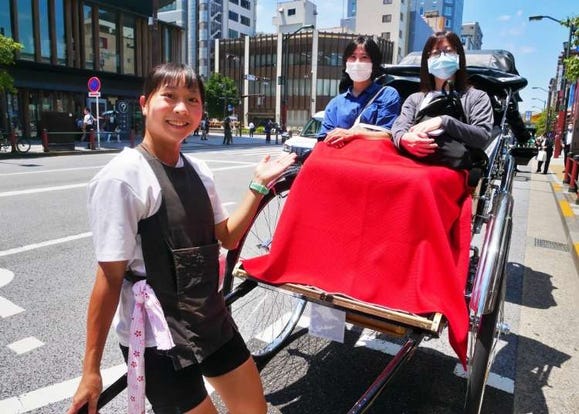
Discover Asakusa Through the Eyes of a Taiwanese Rickshaw Puller - Top Attractions & Sweet Treats Revealed!
-
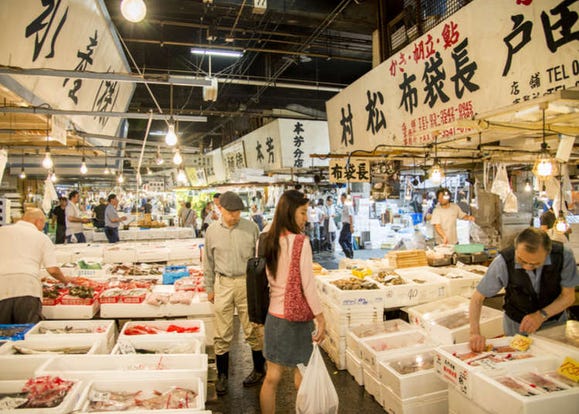
6 Fun Things to Do at Tokyo's World-Famous Tsukiji Outer Market!
-
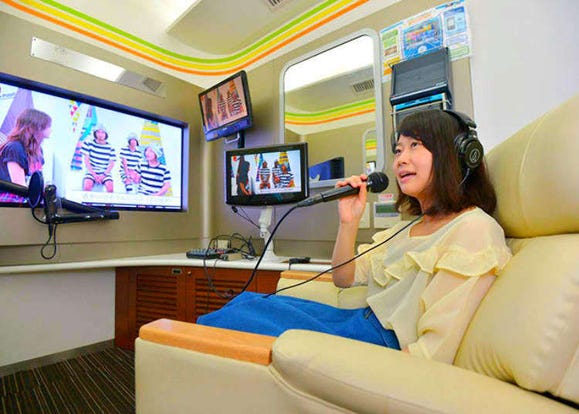
Spending Wonderful Time Alone in Shibuya - Free Cosmetics and a Hundred-Yen Bus!
-
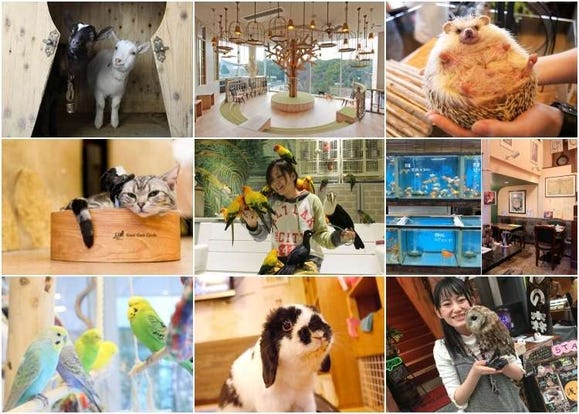
Dine With Rabbits! 9 Cute and Cuddly Animal Cafes in Tokyo
-
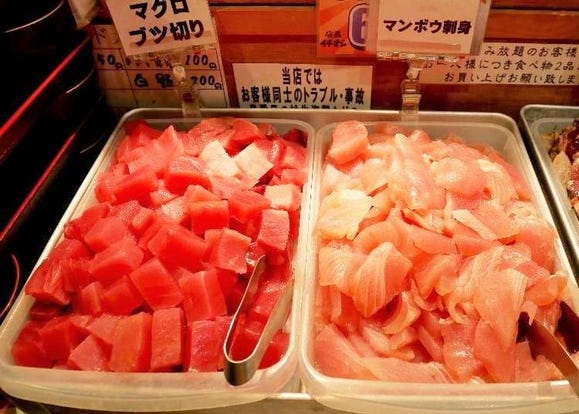
Numazuko Kaisho in Ueno: Good Quality, All-You-Can-Eat Seafood for Just US$12!?
-
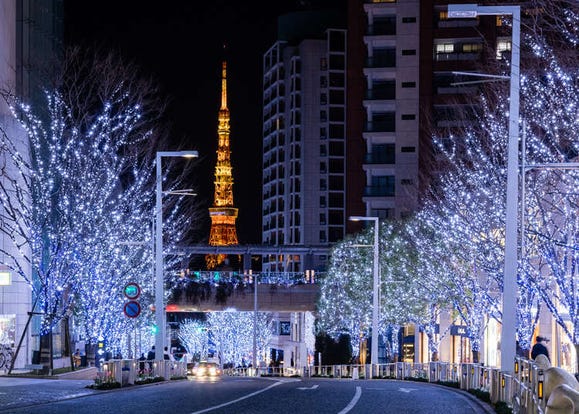
Brighten Up Your Winter: 13 of the Best Tokyo Illuminations (2023-2024)
- #best ramen tokyo
- #what to buy in ameyoko
- #what to bring to japan
- #new years in tokyo
- #best izakaya shinjuku
- #things to do tokyo
- #japanese nail trends
- #what to do in odaiba
- #onsen tattoo friendly tokyo
- #daiso
- #best sushi ginza
- #japanese convenience store snacks
- #best yakiniku shibuya
- #japanese fashion culture
- #best japanese soft drinks















